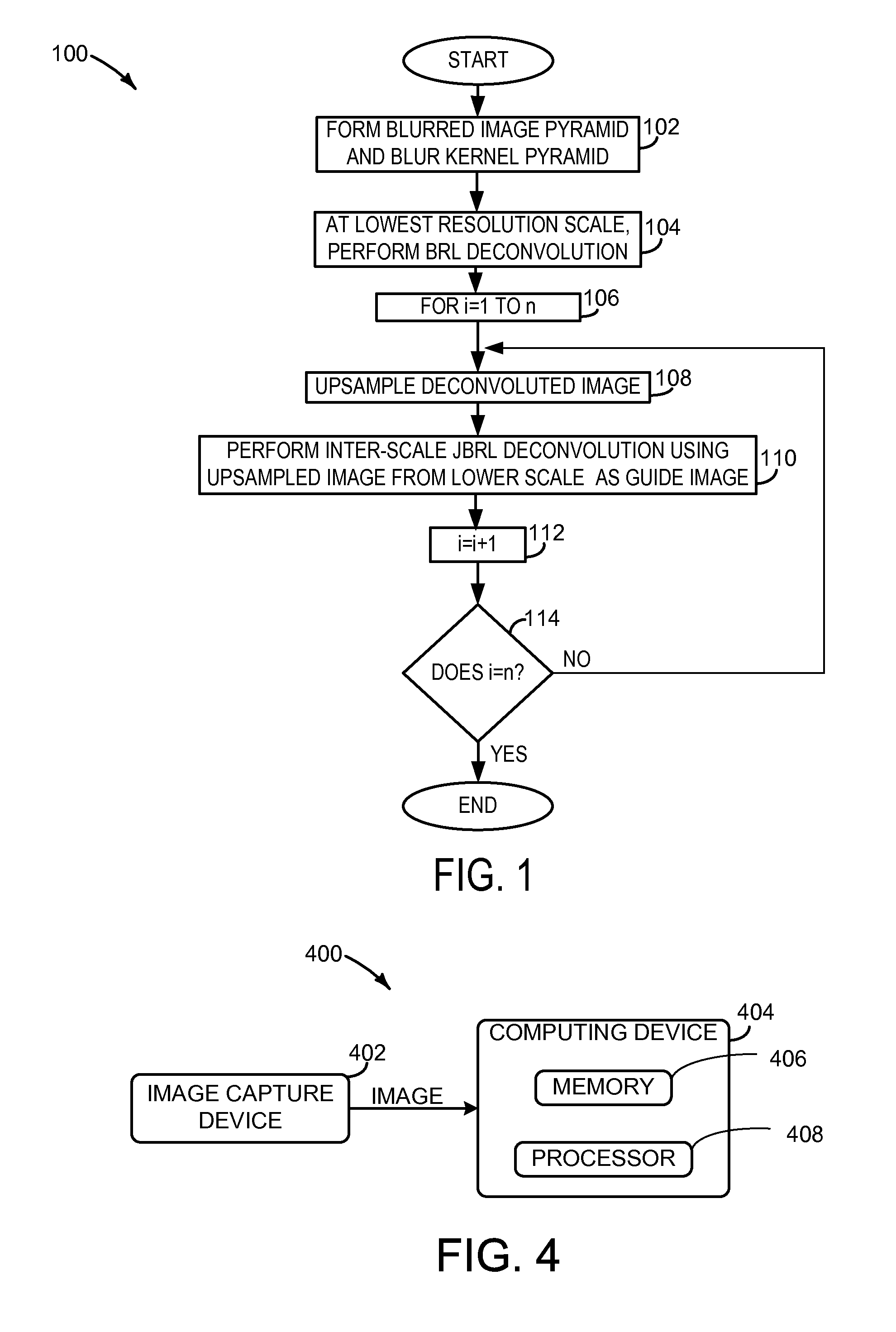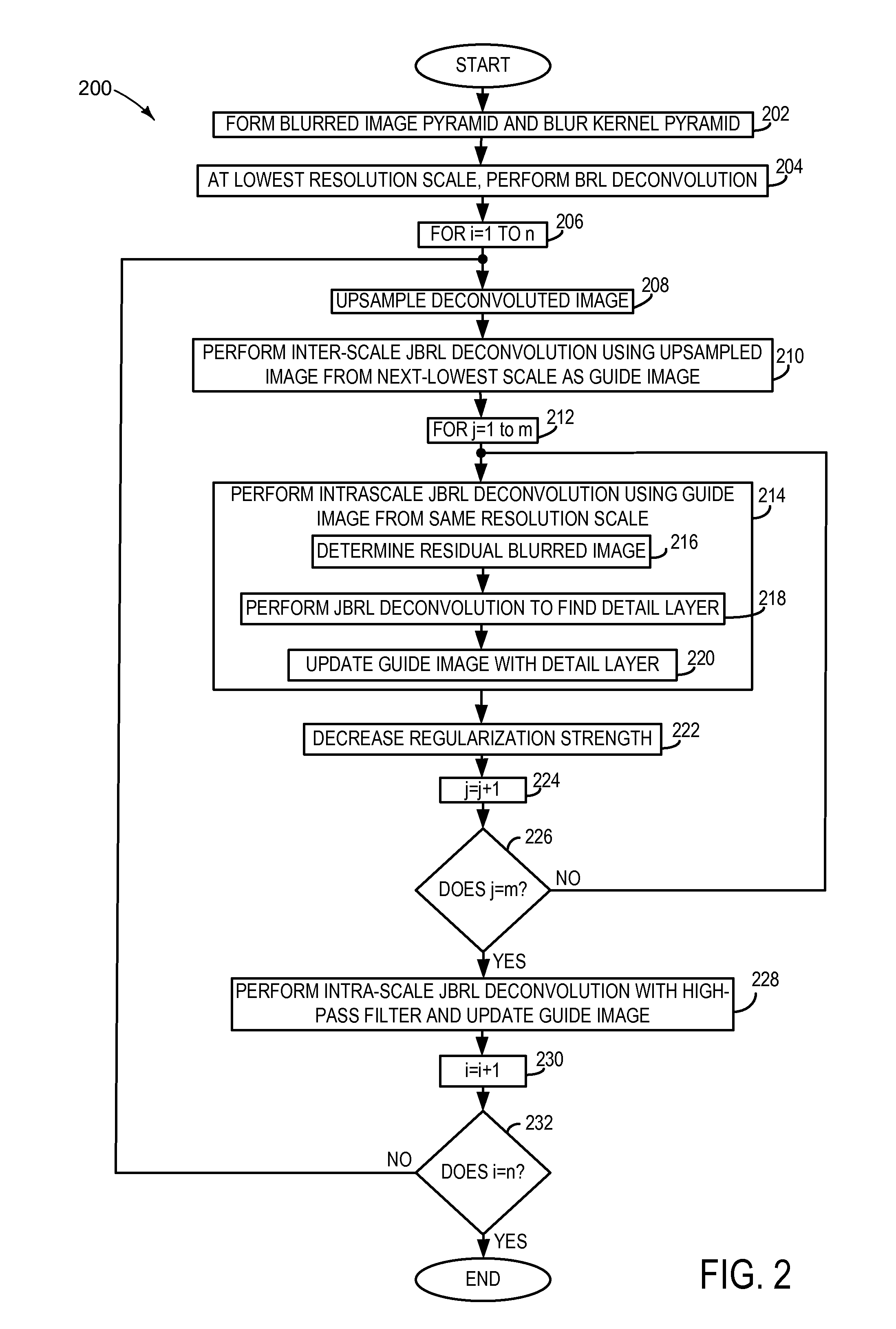Removing Blur from an Image
- Summary
- Abstract
- Description
- Claims
- Application Information
AI Technical Summary
Benefits of technology
Problems solved by technology
Method used
Image
Examples
Embodiment Construction
[0011]Embodiments are disclosed herein that relate to the deconvolution of an image in such a manner as to reduce ringing and other artifacts that arise from other deconvolution processes. The disclosed embodiments utilize novel modifications of the Richardson-Lucy (RL) deconvolution approach to iteratively recover detail in blurred transition regions of an image. Prior to discussing the iterative recovery of detail in an image, the RL and modified RL deconvolution approaches are described.
[0012]The RL deconvolution approach involves determining a likelihood probability of an image I for a Poisson noise distribution. The likelihood probability of the image I may be expressed as:
p(B|I)=∏x(I⊗K)(x)B(x)exp{-(I⊗K)(x)}B(x)!,(1)
where B(x)=Poisson((IK)(x)) is a Poisson process for each pixel x. For simplicity, the x is omitted from the following equations. The maximum likelihood solution of I may be obtained by minimizing the following energy:
I*=argminIE(I),where(2)E(I)=∑{(I⊗K)-B·log[(I⊗K)]...
PUM
 Login to View More
Login to View More Abstract
Description
Claims
Application Information
 Login to View More
Login to View More - R&D
- Intellectual Property
- Life Sciences
- Materials
- Tech Scout
- Unparalleled Data Quality
- Higher Quality Content
- 60% Fewer Hallucinations
Browse by: Latest US Patents, China's latest patents, Technical Efficacy Thesaurus, Application Domain, Technology Topic, Popular Technical Reports.
© 2025 PatSnap. All rights reserved.Legal|Privacy policy|Modern Slavery Act Transparency Statement|Sitemap|About US| Contact US: help@patsnap.com



